Khiva- The Paradox of Holding Onto What You Have
Preservation, identity, and the tension at the heart of one of Central Asia’s most beautiful and historic cities.
There’s a well-known philosophical puzzle called the Ship of Theseus. A boat is gradually repaired as it rots over time until every plank, every nail, has been replaced. When nothing original remains, is it still the same ship?
This thought experiment raises a deceptively simple question: can something change completely and still be what it was?
It’s a question of memory, of continuity, of the stories we tell to make sense of impermanence. And it is not just a thought experiment. You, reading this, are not made of the same cells you once were. Your body has sloughed off and remade itself many times. And yet you still consider yourself “you.” A self that endures.
Now think about a city.
What makes a place something worth giving the same name to? Is it the location? Maybe. But being in the same place doesn’t make two things the same. If you tear down a house and build a new one in the same spot, it is not the same house.
Now multiply that out. When all the houses have crumbled and are reconstructed, is it the same city?
Standing within the walls of Ichan Kala, the ancient citadel of Khiva, in the south-west of Uzbekistan, the question is no longer abstract. You are surrounded by buildings that have stood, fallen, and stood again, plastered over, remade, revised, and still present themselves as a singular place.
The turquoise domes shimmer in the desert light, and the narrow mudbrick alleys curve like lines of remembered poetry. But is it still Khiva?
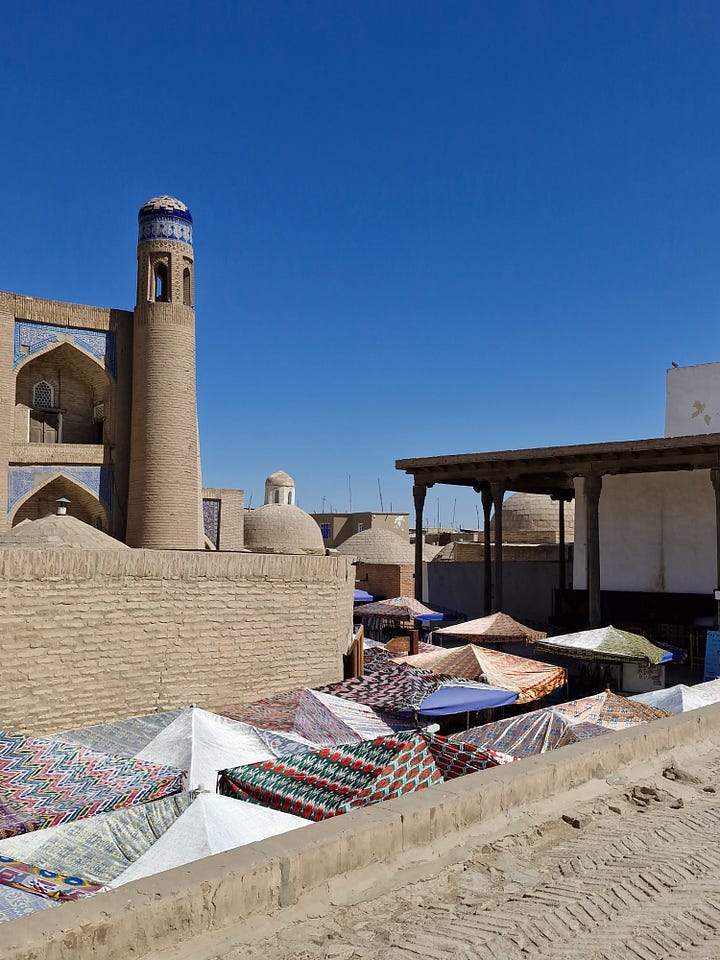
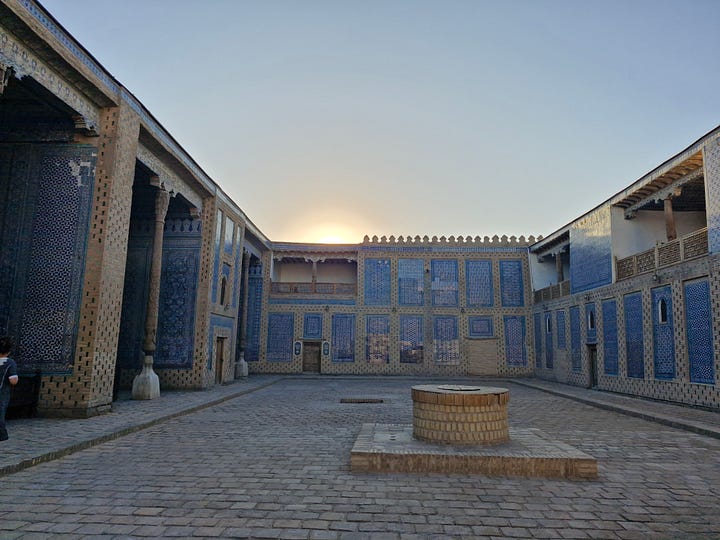
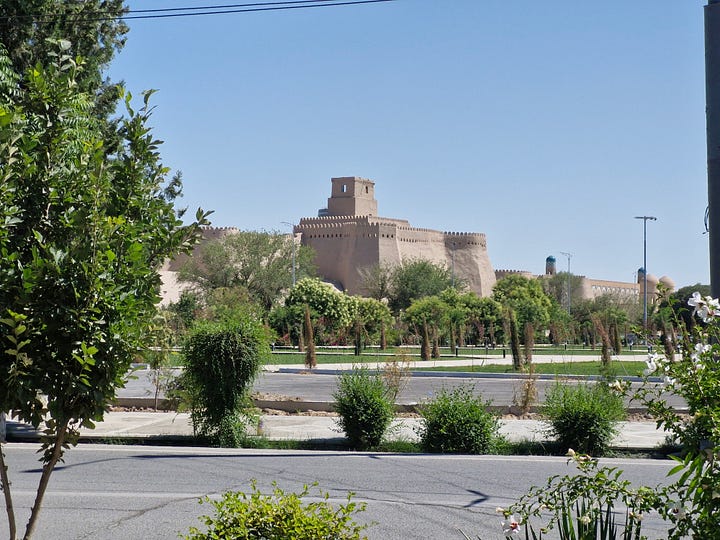
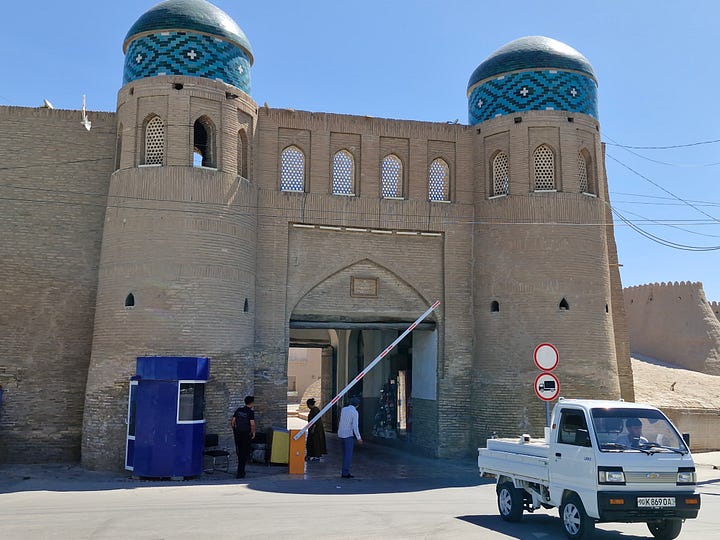
The old city, Ichan Kala, is one of the few places anywhere in the world where people still live inside a World Heritage Site. It consists of an almost entirely intact walled citadel, famous for its turquoise domes, narrow alleys, mudbrick architecture, and Silk Road legends. Around 3,000 people still live within the inner wall, nearly all involved in tourism, such as renting out rooms in family homes.
Our guide when we visit in July is one of those select few. His attachment to the place is not only clear from his passion for the place- but his family has also lived within the walls for over five generations. This select 3000 is both custodian and resident, part of the living archive of the city.
Yet the preservation of Khiva is not left to memory alone. It is codified, overseen, measured. Every home within Ichan Kala must comply with strict architectural standards: flat roofs prone to leakage, courtyards with traditional layouts, bricks that cumble. No PVC, no concrete, no pitched roofs to protect against the rain. The cost of staying in Khiva is staying in the past.
UNESCO regulations require residents to repair them using traditional sun-dried clay and straw plaster every few years. The repairs are ritualistic.
And so, according to the experts, in order to preserve Khiva, it must be rebuilt. Not once, but constantly.
This is the disquieting truth at the heart of heritage preservation. Where many imagine preservation as freezing something in time or locking it in amber, Khiva shows that to conserve, things must sometimes change. The mud must be reapplied, the bricks re-fired. The form remains, the matter changes.
None of the original material will remain. Yet the city, somehow, is still supposed to be “Khiva.” The city endures.
If no material from the “original” remains, what is being preserved? And anyway, real places are more like living texts: overwritten, reinterpreted, palimpsests. To preserve Khiva is to perform an ongoing ritual of destruction and renewal. And if all the bricks are replaced, all the walls replastered, what exactly are we keeping?
This is no small question in a post-Soviet republic reinventing itself for a global audience. Uzbekistan is now promoting itself as the heart of Central Asia’s Silk Road revival, with Khiva as a crown jewel. Tourism has exploded. Infrastructure follows: boutique hotels, heritage-style cafes, curated experiences. Khiva is no longer merely a city. It’s a brand. And part of that brand is its heritage status.
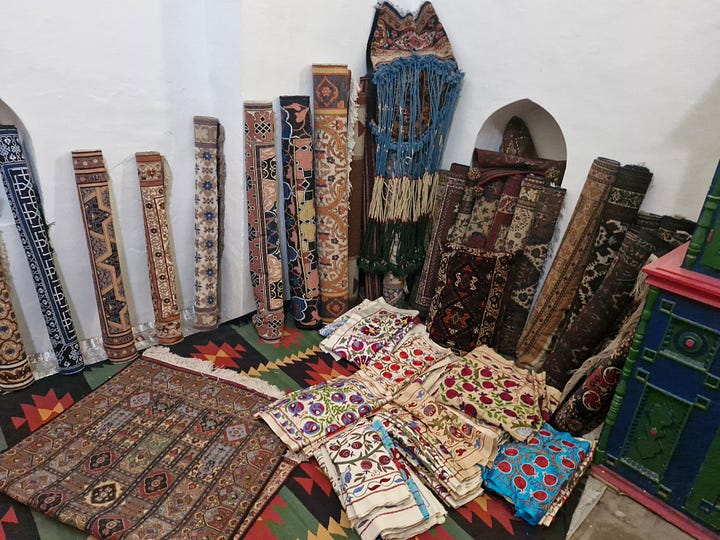

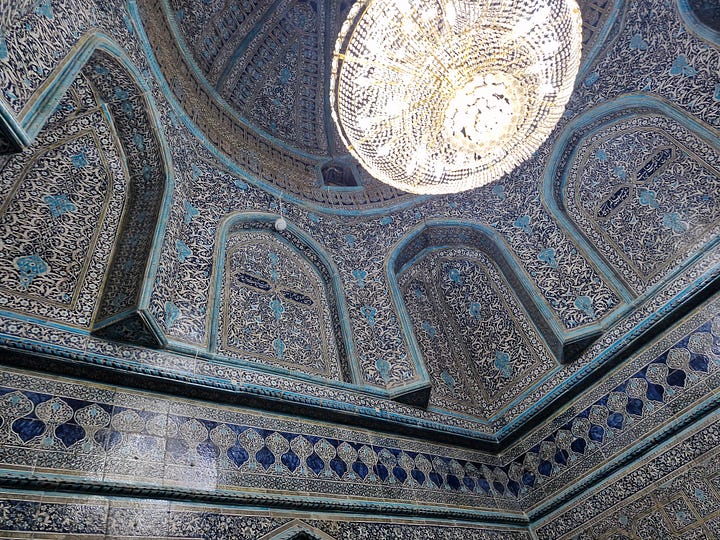

Since gaining UNESCO recognition, Khiva has become a site of negotiation: between international conservationists, the Uzbek state, and the residents themselves. The actors shift, but the debate persists. Some want to protect, others to modernise, others simply to leave it be. Preservation, development, and everyday life pull at each other, not unlike the paradoxical forces that shape identity itself.
Preservation, in this context, is not neutral. It is a political act, often shaped more by the demands of global heritage markets than by the desires of those who live in the place being preserved. It is also a kind of performance. One that relies not on the actual age of the walls, but on their aesthetic continuity. A tourist does not come to see eighth-century clay. They come to feel as if they have stepped outside of time. It must be performed. Constructed. Managed.
Khiva is no longer a capital, nor a caravanserai, nor the beating heart of a khanate. But it is something else now: a symbol, a memory made tangible. Its role has shifted, but its identity clings on. Not through the survival of its materials, but through the continuity of its meaning.
Other cities along the Silk Road have suffered similar fates. Invaded, razed, renamed. And yet they persist. Not because of what was saved, but because of what was remembered. That is why most have forgotten about the original city on the site of Samarkand. The idea that this place matters survives only as long as we agree that it does.
And so, Khiva endures. In the early evening, when the sun dips below the high mud walls and the heat lifts slightly from the earth, the city glows. Golden light settles on domes and alleyways. The call to prayer ripples out across the rooftops, and somewhere, a child plays with a ball against a wall that looks older than it is.
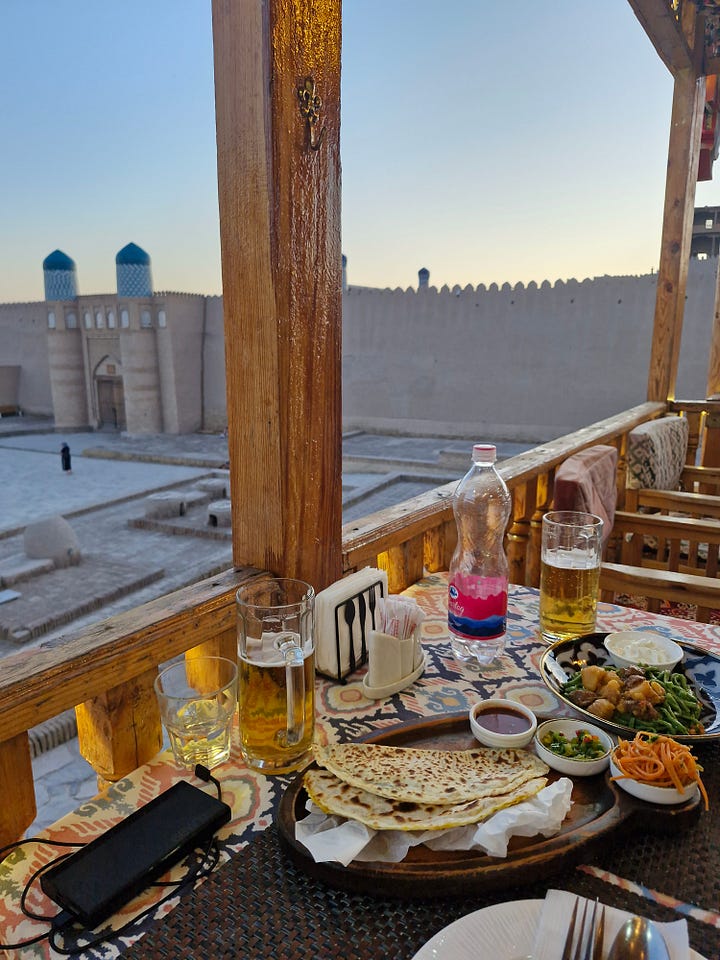
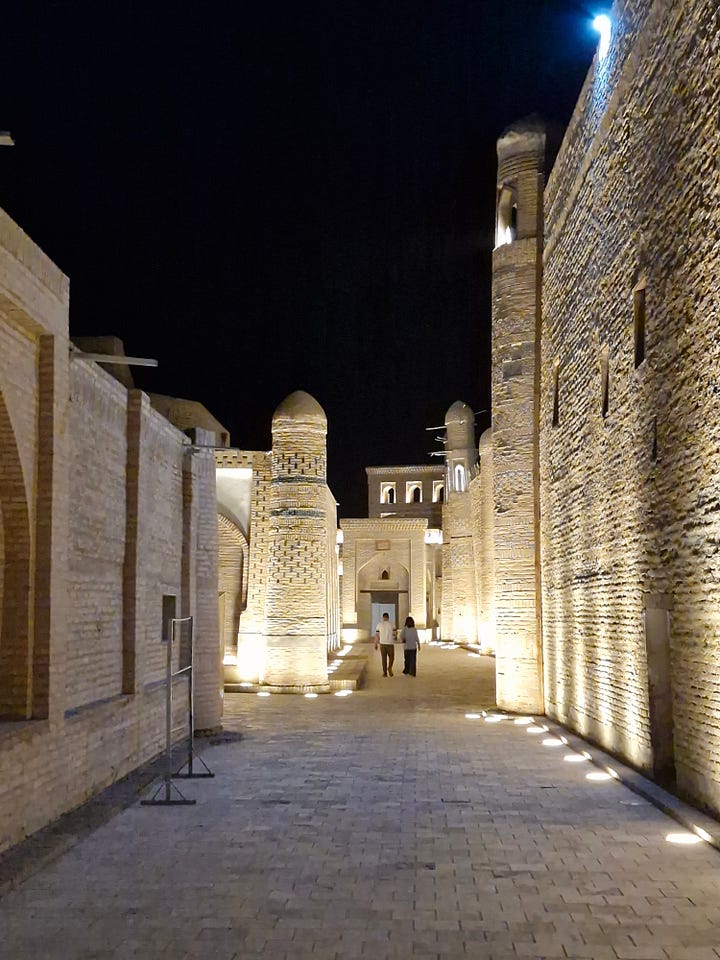
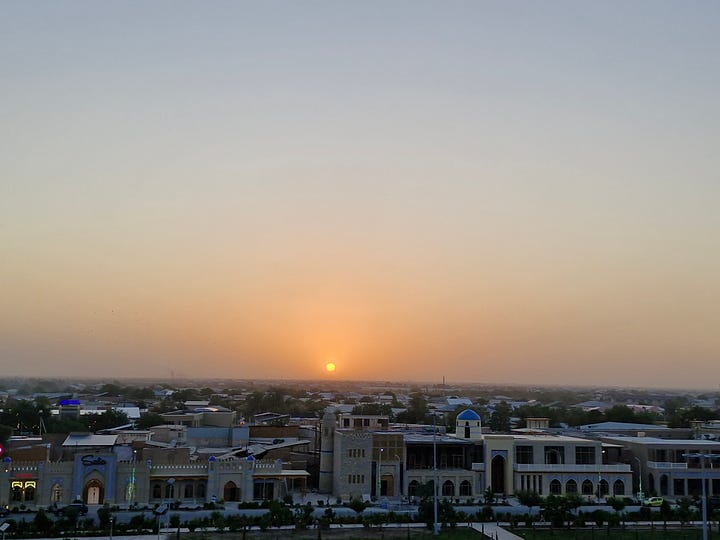
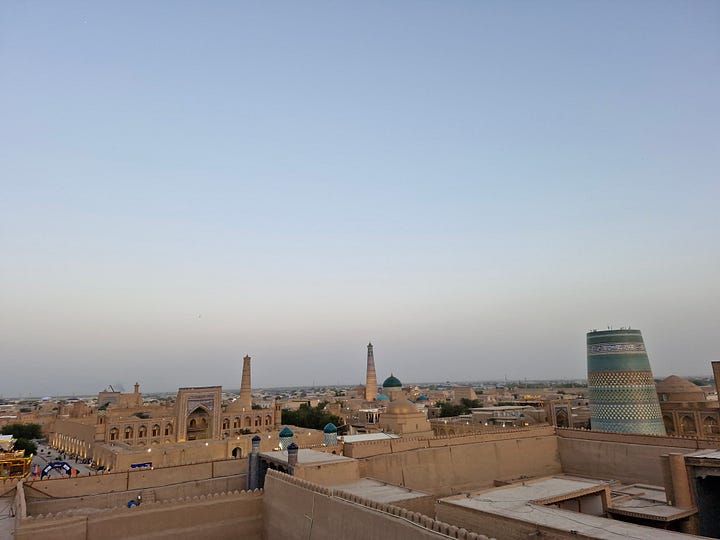
Henri Lefebvre once called cities oeuvres: works of art, always incomplete, shaped by those who inhabit them. By this measure, Khiva is not a relic, but a collaboration. A palimpsest written over but never erased.
Yet, this ongoing collaboration faces pressure. As tourism expands, so too does the demand for infrastructure. New hotels, restaurants, tour packages. A thriving economy on one hand, an eroding authenticity on the other. Can Khiva be both a living city and a living museum? Should it be remade to reflect what it once was, or left to change, even if that change leads to forgetting?
Who gets to decide? The cultural bureaucrat in Tashkent? The visitor with a Lonely Planet? Or the family who has been tied to the land for generations, but just wants a sloped roof that will deflect the rain?
These are personal questions with political stakes. They play out not only in policy documents but in kitchens and courtyards. In the quiet tension between history and livelihood.
But its future will likely depend not on what it can replicate of its past, but on how convincingly it can project an essence. A sense of itself that feels coherent, even as it evolves.
What gives continuity to a place is not stone, but story. The story that says: this is still that place. These streets, even when remade, still carry the same rhythm. These walls, even when replastered, still hold the same silence.
But for that to remain true, it is not enough to preserve the architecture. We must preserve the meaning. And meanings, unlike mudbrick, are plural. They shift. They belong not just to institutions or tourists, but to the people who live within the walls, who cook in the courtyards, who patch the roofs again and again.
The process of constant negotiation between past and present, memory and function is the real preservation work. Cities are always becoming. If Khiva is to endure, it must do so not as a replica of itself, but as a city capable of holding memory and change in tension. That requires policy that listens as much as it legislates. That supports experimentation, embraces imperfection, and above all, understands that heritage is not a product to be packaged, but a relationship to be sustained.
In the end, cities are not preserved by scaffolding and stone alone. They are held in place by belief. By collective imagination. By the sense that this, right here, is still that place. So long as people are willing to walk its alleys, to tell its stories, Khiva remains.
In Khiva, the walls will keep needing repair. But if we get the story right and if we protect the right to keep telling it, then perhaps the city, too, will hold.




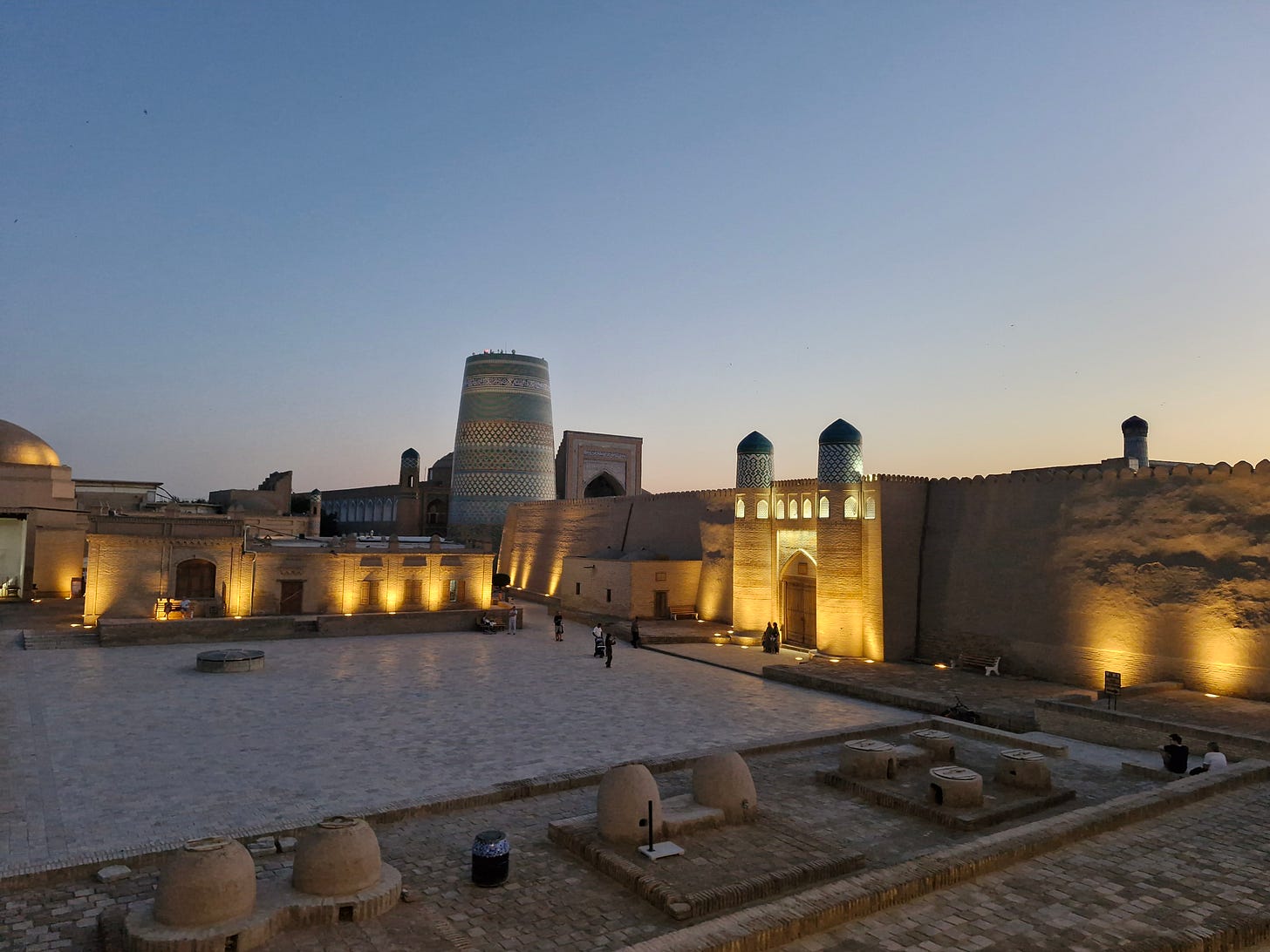
Brilliantly written!